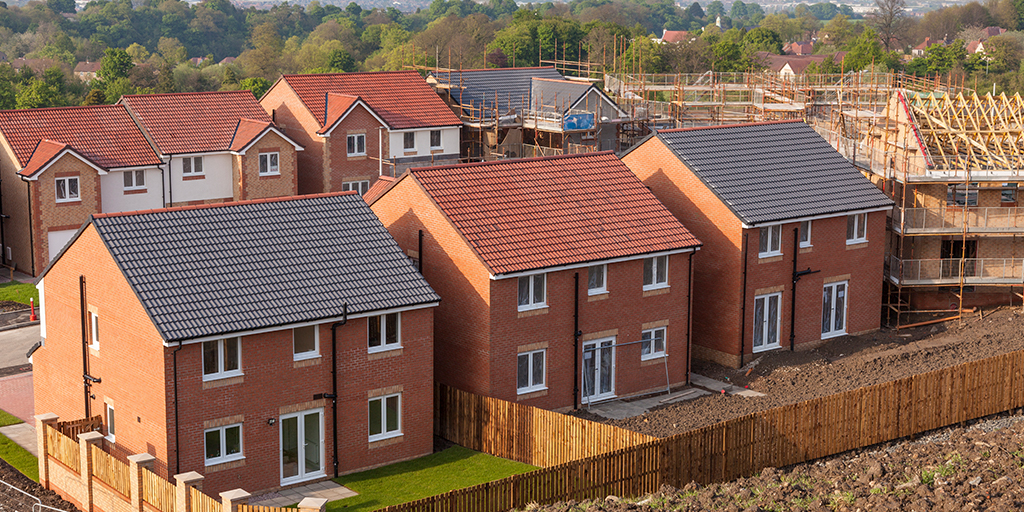Radical improvements are needed for the energy performance of newly built homes as the government has stated policy changes for greener homes and will be fully introduced by 2025. What does this mean for the building sector, and are greener homes achievable?
Let’s look at the upcoming legislation changes, upcoming trends, and general advice for carbon-efficient new build developments.
New build properties in England will need to meet strict energy efficiency standards
The Future Home Standard set by the government is being launched in stages via updates to the energy and ventilation section of Building Regulations known as Part L. The first stage of the enforced regulations is the beginning of June 2022. In a separate announcement, proposed changes to parts L and F of Building Regulations for new and existing non-domestic builds are set to make them carbon-zero in preparation for 2025.
What does this mean for the construction industry, and how will it change?
Part L focuses on conserving fuel and energy to raise energy performance by limiting heat loss.
The new regulations are lowering the U-values for windows from 1.6W/m2k to 1.4 W/m2k with a suggestion of aiming even lower to 1.2W/m2k triggering the discussion about whether triple glazing would be required to achieve such low results. The U-value for doors has also been reduced to a requirement of 1.4W/m2k, 0.2 lower than previously.
Quality doors and windows should easily achieve these measurements when offering the correct glazing and spacer bar. Still, we could see triple glazing requests increasing as homeowners become more aware of energy efficiency requirements.
Airtightness is another focus of part L; windows and doors need to ensure the permanence of an air barrier. For installers of windows and doors providing installations in new homes and extensions, the need to get used to working with expanding sealant tapes or equivalent products to achieve this standard will become an everyday working practice.
Part F concentrates on ventilation; the new rules state that new windows to new or existing dwellings will require trickle ventilation. There is a loophole in the new requirements. If a mechanical ventilation system or extractor fan is installed, trickle vents can be avoided. Trickle vents are the most realistic option and the most practical solution for installers to abide by to meet the new building regulations.

What does COP26 mean for the construction industry?
The United Nations Conference on Climate change, otherwise known as COP26, gathered world leaders, business leaders, non-profit organisations, and activists to tackle the issues of climate change to combat the crisis before it is too late!
COP26 is a vital stage in the cooperative journey to reduce the impact of climate change. The Built Environment and Construction Sector accounts for 38% of global carbon emissions. Taking active steps to achieve the target of net-zero – it will be a crucial solution to the climate crisis.
As the construction industry looks towards COP26 for quantifiable progress to reduce carbon emissions, The Construction Leadership Council, CLC, have shown main concerns across transport, buildings, and construction based on the Climate Change Committee’s Sixth carbon budget. This gives everyone in the industry a role to play—the help of the road map to COP and beyond identifies areas of improvement.
Building for the future energy efficiency standards
The government has set a timetable leading up to the Future Home Standard, including an uplift in part L standards, due to come in June 2022, for new build properties to achieve a 31% reduction in emissions in new build developments. These transitional provisions are likely to be extended to June 2023 for compliance. However, they will apply on an individual home basis rather than a whole development.
This will give the home building industry and supply chains a chance to scale up and learn the required skills. More work on technical standards will be subject to further consolidation in 2023 and followed by legislation in 2024.

Expected growth in UK construction and manufacturing firms
As new home demand increases and manufacturing firms are set to double in growth, we can work together to combat the building sector effects on the climate crisis.
Managing Director of Insight Data, Andrew Scott comments:
“The new regulations set out the highlight that new builds going forward will require more efficient building products. The Fenestration industry will need to use this as an opportunity to improve energy performance in their own products. The challenge for the manufacturers and fabricators is making sure the end users are aware of what is going into their new homes. This ultimately ends up with the installer as they are end user facing. It will be as important as ever to make sure suppliers and fabricators are working with the best installers out there who know and buy into the new building regulations”
The power of data with Insight
Insight has the data to structure your marketing plans, increase rates on campaigns and dive into the data specifics you need to assist with direct marketing. By specialising in niche sectors, we have the ability to continuously update, verify, and manage our prospect database more frequently than any other provider of marketing data.
We have founded ‘live data’ to produce better and faster marketing results that boost and protect your business reputation. Our online prospect data and CRM system, Salestracker, has over 700 users, including some industry-leading building product suppliers.
If you want to gain access to marketing data and want consistent business growth, contact Insight Data on 01934 808 293 or email us at hello@insightdata.co.uk. You can work smarter, not harder, in 2022.







